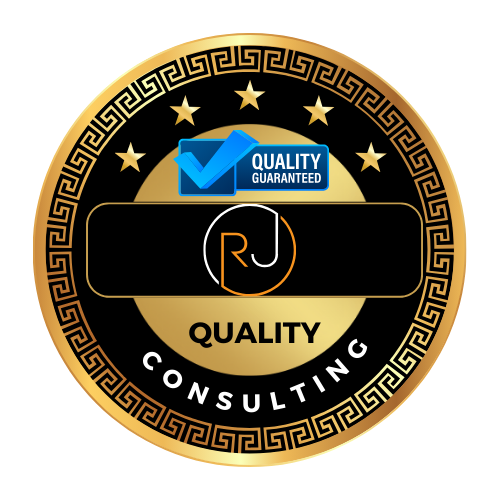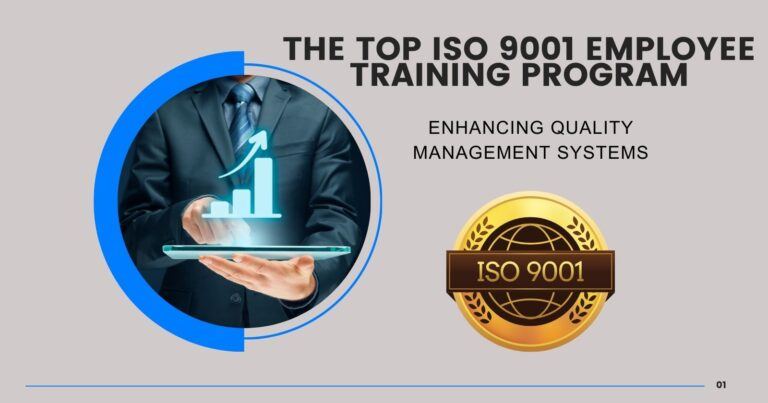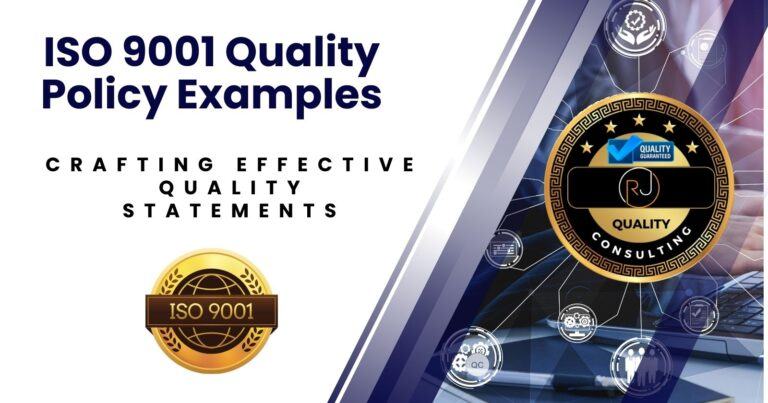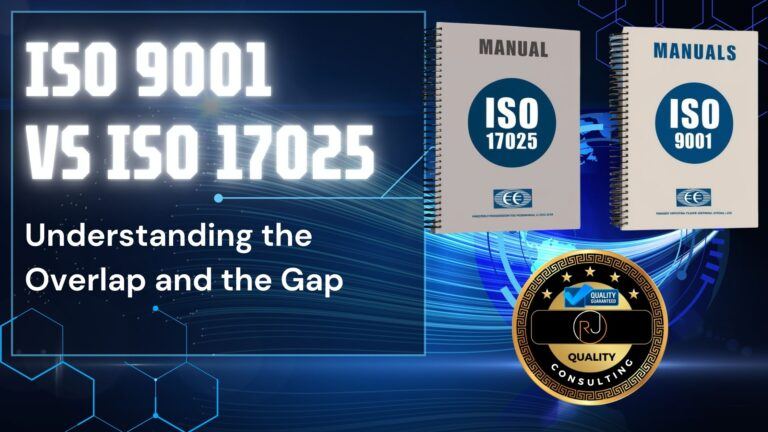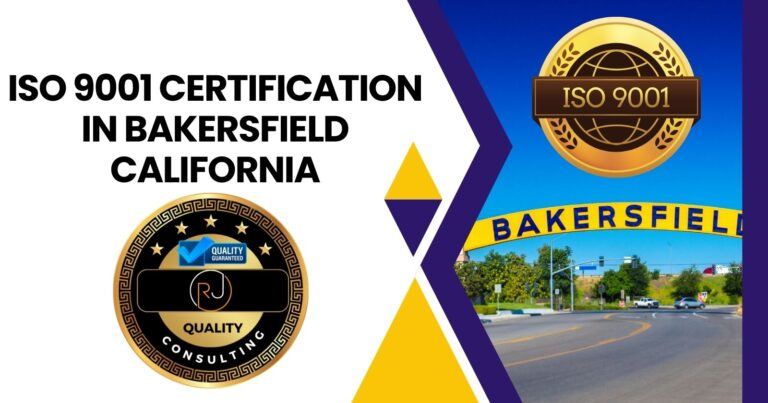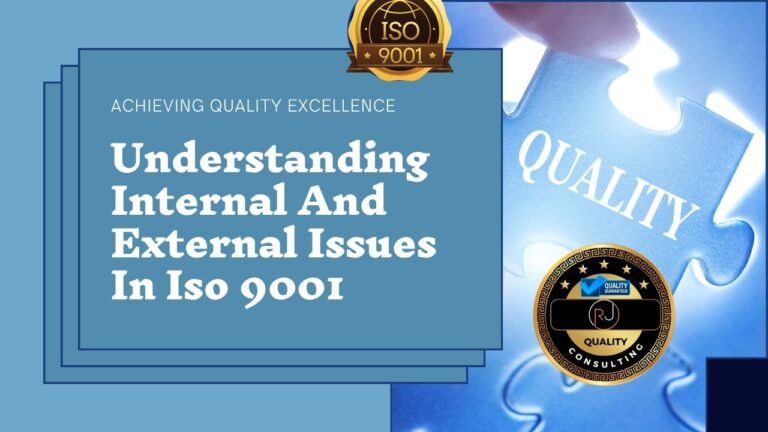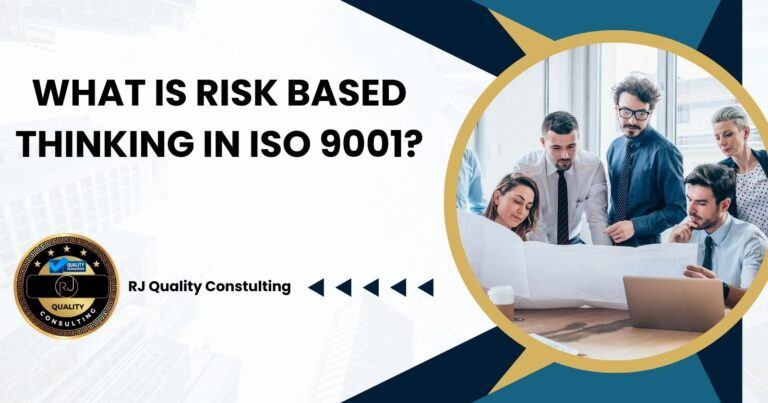ISO 9001 Courses Online: Comprehensive Training for Quality Management Certification
ISO 9001 courses online offer a flexible way to learn about quality management systems. These courses help people and companies understand how to improve their processes and meet customer needs better. Online ISO 9001 training covers topics like auditing, implementation, and maintaining certification.

Many organizations offer ISO 9001 courses online. These include self-paced options and live instructor-led sessions. Students can learn at their own speed or interact with teachers and other learners in real-time. The courses often use tools like videos, quizzes, and practice exercises to make learning easier.
Taking an ISO 9001 course online can lead to certification. This can be useful for career growth or helping a company get ISO 9001 certified. The skills learned in these courses can be applied right away to improve workplace quality and efficiency.
📘 ISO/IEC 17025 Quality Manual Template
Accelerate your lab’s accreditation process with our comprehensive Quality Manual Template, designed to align with ISO/IEC 17025:2017 standards.
- Fully editable and customizable to fit your laboratory’s needs.
- Includes all necessary procedures, forms, and policies.
- Structured to facilitate easy implementation and compliance.
- Developed by experts with extensive ISO/IEC 17025 experience.
Check Out Our Great Selection of ISO 9001 Online Training Courses
Looking to master ISO 9001:2015 or ensure top-notch training for your team? Explore our Online Courses here!
Key Takeaways
- Online ISO 9001 courses provide flexible learning options for quality management skills
- Training covers auditing, implementation, and maintaining ISO 9001 certification
- Certification from these courses can boost careers and help companies improve their processes
Understanding ISO 9001 Courses Online
ISO 9001 is an international standard for quality management systems. It helps organizations improve their processes and meet customer needs. The standard applies to businesses of all sizes and types.
History and Principles of ISO 9001
ISO 9001 was first published in 1987. It grew from military and nuclear industry standards. The latest version came out in 2015.
ISO 9001 is built on seven key principles:
- Customer focus
- Leadership
- Engagement of people
- Process approach
- Improvement
- Evidence-based decision making
- Relationship management
These principles guide organizations in creating effective quality management systems.
Overview of ISO 9001:2015 Standard Requirements
ISO 9001:2015 has ten main sections. Sections 0-3 give background info. Sections 4-10 contain the main requirements:
- Context of the organization
- Leadership
- Planning
- Support
- Operation
- Performance evaluation
- Improvement
Organizations must address all these areas to get certified. The standard focuses on risk-based thinking and the Plan-Do-Check-Act cycle.
Key Components of the ISO 9001 Quality Management Systems
A Quality Management System (QMS) based on ISO 9001 has several important parts:
- Quality policy and objectives
- Quality manual
- Documented procedures
- Work instructions
- Records
The QMS should cover all key business processes. It needs to be tailored to each organization’s needs.
A good QMS helps:
- Improve product and service quality
- Increase customer satisfaction
- Boost efficiency
- Reduce waste and costs
Regular audits and reviews keep the system working well.
Benefits of ISO 9001 Certification

ISO 9001 certification brings many advantages to organizations. It helps improve customer satisfaction, streamline business processes, and manage risks more effectively.
Enhancing Customer Satisfaction
ISO 9001 certification focuses on meeting customer needs. It requires companies to gather and act on customer feedback.
This leads to better products and services. Certified firms often see higher customer loyalty and fewer complaints.
The certification also builds trust. Customers know the company follows global quality standards. This can give certified businesses an edge over competitors.
Regular audits ensure the company keeps improving its customer focus. This ongoing effort helps maintain strong customer relationships long-term.
Improving Business Processes
ISO 9001 pushes companies to look closely at how they work. It helps identify and fix inefficient processes.
This often leads to less waste and fewer errors. Employees can work more productively with clearer procedures.
The standard promotes a culture of continuous improvement. Teams are encouraged to find better ways to do things.
Many certified companies report cost savings from smoother operations. They can deliver products faster and more reliably.
Strengthening Risk Management
ISO 9001 helps businesses spot and address potential problems early. It requires a systematic approach to risk assessment.
Companies learn to predict and prepare for challenges. This can prevent costly issues before they happen.
The certification process involves creating backup plans. This makes businesses more resilient to disruptions.
Regular reviews help keep risk strategies up-to-date. As the business world changes, ISO 9001 certified firms stay ready to adapt.
ISO 9001 Courses Online

ISO 9001 online training courses offer flexible options for learning about quality management systems. These courses provide knowledge and skills to learn how to implement ISO 9001, maintain, and audit ISO 9001 standards.
Identifying the Right ISO 9001 Course
ISO 9001 courses cater to different roles and experience levels. Beginner courses introduce quality management basics. Advanced courses focus on auditing and implementation.
Some courses target specific industries or job functions. IT professionals may choose courses with a technology focus. Manufacturing workers might select courses emphasizing production quality.
Course length varies from short modules to comprehensive programs. Self-paced options allow flexible schedules. Live online classes offer interactive learning.
CPD Accredited Course Standards
CPD (Continuing Professional Development) accredited courses meet high educational standards. These courses are recognized by professional bodies and employers.
CPD accredited ISO 9001 courses:
- Use qualified instructors
- Offer up-to-date content
- Provide practical skills
- Include assessments
Learners receive certificates upon completion. These certificates can boost career prospects and demonstrate expertise.
Online Course Structure and Modules
ISO 9001 online courses typically include several modules. Each module covers a key aspect of the standard.
Common course modules:
- Introduction to ISO 9001
- Quality management principles
- Process approach
- Risk-based thinking
- Documentation requirements
- Internal auditing
Courses use various learning materials:
- Video lectures
- Interactive quizzes
- Case studies
- Practical exercises
Many courses include final exams or projects. These help learners apply their new knowledge to real-world scenarios.
Roles in Quality Management

Quality management involves several key roles that work together to ensure effective systems and processes. These roles have specific responsibilities and require specialized training to perform effectively.
Responsibilities of Internal Auditors
Internal auditors play a crucial role in quality management systems. They review processes, identify issues, and suggest improvements. Their main tasks include:
- Planning and conducting audits
- Documenting findings
- Reporting to management
- Following up on corrective actions
Internal auditors need strong analytical skills and a deep understanding of ISO 9001 standards. They must remain objective and independent in their assessments.
Becoming an ISO 9001 Lead Auditor
Lead auditors take on more responsibility in the audit process. They:
- Manage audit teams
- Communicate with top management
- Make final decisions on audit findings
Becoming a lead auditor requires additional training and experience. Many organizations offer ISO 9001 Lead Auditor courses. These programs cover:
- Advanced auditing techniques
- Leadership skills
- Reporting methods
Certification as a lead auditor can boost career prospects in quality management.
Quality Management Team and EMS
The quality management team oversees the entire quality system. This team often includes:
- Quality managers
- Process owners
- Department heads
They work together to implement and maintain quality standards. The team also handles the Environmental Management System (EMS) if the organization has one.
Key responsibilities of the quality management team include:
- Setting quality objectives
- Reviewing system performance
- Ensuring compliance with ISO 9001
- Training staff on quality procedures
An effective team needs a mix of technical knowledge and leadership skills.
ISO 9001 Certification Process

Getting ISO 9001 certified involves several key steps. Organizations need to prepare thoroughly, understand the audit process, and choose the right certification body. Let’s look at each part of the certification journey.
Preparation for ISO 9001 Certification
Companies start by learning about ISO 9001 standards. They review their current processes and compare them to ISO 9001 requirements. This helps find gaps that need fixing.
Next, they create new procedures or update old ones to meet the standard. Staff training is crucial at this stage. Everyone needs to understand the new ways of working.
Documentation is a big part of preparation. Companies must write down their quality policies and processes. They also set up systems to track and measure their performance.
Many businesses do an internal audit before the real one. This helps catch and fix problems early.
Understanding the ISO 9001 Audit Process
The ISO 9001 audit checks if a company follows the standard. It happens in two main stages.
Stage one is a review of documents and basic systems. The auditor looks at the company’s quality manual and procedures. They might visit to get a feel for the organization.
Stage two is more detailed. Auditors spend time on-site watching how things work. They talk to staff and check records. The goal is to see if the company really follows its own rules.
Auditors look for proof that the quality system works well. They note any issues they find. At the end, they decide if the company passes or needs to make changes.
Selecting a Certification Body
Picking the right certification body is important. Companies should look for bodies that are accredited. This means they’re approved to give out ISO 9001 certificates.
It’s smart to check the certification body’s experience. Some focus on certain industries. Others might have a good reputation for being thorough but fair.
Cost is a factor, but shouldn’t be the only one. Cheap isn’t always best. Companies should ask about the whole process, including follow-up audits.
It’s good to talk to other certified businesses. They can share their experiences with different certification bodies. This helps in making a good choice.
Implementing an ISO 9001 Quality Management System
Putting an ISO 9001 quality management system (QMS) in place takes careful planning and effort. It needs a step-by-step approach and buy-in from everyone in the company.
Planning and Documentation
The first step is to make a plan. This plan should spell out the goals, timeline, and resources needed. A team should be picked to lead the work.
Next, the company must write down its processes. This includes making a quality manual, policies, and work instructions. These documents should be clear and easy to follow.
It’s also key to set quality goals. These goals should be measurable and in line with the company’s larger aims.
Effective Implementation Strategies
Training staff is a must. Everyone needs to know their role in the QMS. This helps build a culture of quality.
Top leaders should show they support the system. They can do this by taking part in quality meetings and giving needed resources.
A good way to start is with a pilot project. This lets the team test the system on a small scale. They can then fix any issues before rolling it out to the whole company.
Monitoring and Continual Improvement
Once the QMS is in place, it needs to be checked often. Internal audits help find areas that need work.
Data from these checks should be used to make the system better. This might mean updating processes or setting new goals.
It’s smart to use tools like charts and graphs. These can show trends and help spot problems early.
Regular management reviews are also key. These meetings look at how well the QMS is working. They also set new goals for the future.
Preparing for ISO 9001 Audits
ISO 9001 audits check if a company’s quality management system meets the standard’s requirements. Good preparation is key for passing these audits. Companies need to do internal checks, make audit plans, and write clear reports.
Conducting Internal Audits
Internal audits help find and fix issues before external audits. A team should review all parts of the quality system. They need to check if processes follow ISO 9001 rules.
The audit team looks at records and talks to staff. They note any problems they find. This helps the company improve its system.
Regular internal audits keep the quality system strong. They also help staff understand ISO 9001 better.
Developing an Audit Program
An audit program sets out when and how audits will happen. It should cover all parts of the quality system over time.
Key steps in making an audit program:
- Pick which areas to audit
- Choose qualified auditors
- Set audit dates
- List what each audit will check
The program should fit the company’s size and type. It needs to be flexible to deal with any new risks or changes.
Creating and Evaluating an Audit Report
Audit reports show what the audit found. They list both good points and areas that need work.
A good audit report includes:
- Audit scope and dates
- Areas checked
- What’s working well
- Problems found
- Ideas for fixing issues
The company should review the report carefully. They need to make plans to fix any problems. This helps improve the quality system.
Follow-up checks make sure the fixes work. This completes the audit process and gets the company ready for external audits.
Maintaining ISO 9001 Compliance
Keeping an ISO 9001 certification requires ongoing effort and attention to detail. Companies must regularly review their processes, focus on safety and sustainability, and undergo periodic audits to stay compliant.
Regular Review of QMS Procedures
Quality Management System (QMS) procedures need constant updates. Companies should check their processes often to make sure they still work well. This means looking at how things are done and finding ways to make them better.
Some key steps include:
- Tracking performance metrics
- Getting feedback from staff and customers
- Fixing problems quickly when they come up
It’s smart to have a team in charge of these reviews. They can meet monthly or quarterly to go over the QMS and suggest changes. This helps keep the system fresh and useful.
Incorporating Safety and Sustainability
Safety and sustainability are big parts of keeping ISO 9001 certification. Companies need to think about how their work affects people and the planet.
To focus on safety:
- Train workers on safe practices
- Check equipment often
- Have clear rules for handling risks
For sustainability:
- Cut down on waste
- Use less energy
- Choose eco-friendly supplies
By caring about these things, businesses can meet ISO 9001 rules and be good corporate citizens. This can also save money and make workers happier.
Periodic Re-Certification and Audits
ISO 9001 certification doesn’t last forever. Companies need to prove they still follow the rules every few years. This process is called re-certification.
Steps in re-certification:
- Internal audit
- Management review
- External audit by a certifying body
Between these big checks, smaller audits happen too. These help catch problems early. They also show that the company cares about quality all the time, not just when the big test comes.
Audits can be stressful, but they help keep the QMS strong. They point out what’s working well and what needs to change. This keeps the company on track with ISO 9001 standards.
Frequently Asked Questions
Many people have questions about ISO 9001 online courses and certification. Here are answers to some common queries about training options, costs, and comparisons to other programs.
What are the best online courses for ISO 9001 training?
Several reputable organizations offer high-quality ISO 9001 online courses. Top options include those from BSI Group, SGS Academy, and ASQ. These courses cover ISO 9001:2015 requirements and implementation methods.
Many provide interactive elements and quizzes to reinforce learning. Some also offer certificates of completion.
Are there any free ISO 9001:2015 courses available online?
A few free introductory ISO 9001:2015 courses exist online. These typically give a basic overview of the standard. Coursera and edX sometimes offer free audit options for their ISO 9001 courses.
Free courses may not go into great depth or provide certificates. For more thorough training, paid courses are often needed.
How can I get ISO 9001 certification online?
ISO 9001 certification requires an on-site audit by an accredited certification body. Online courses can prepare you for certification but can’t grant it directly.
To get certified:
- Take online training courses
- Implement ISO 9001 in your organization
- Undergo an audit by a certification body
Some certification bodies offer remote audits, but most require in-person visits.
What is the cost of ISO 9001 online training courses?
ISO 9001 online course prices vary widely. Basic intro courses may cost $100-$300. More comprehensive programs can range from $500 to $2000 or more.
Factors affecting cost include:
- Course length and depth
- Included materials
- Live instructor support
- Certification exam prep
Some courses offer payment plans to spread out costs.
How long is the duration of an ISO 9001 online training program?
ISO 9001 online training programs range from a few hours to several weeks. Short intro courses may take 2-4 hours. In-depth implementation courses often last 16-40 hours.
Self-paced programs allow flexible scheduling. Instructor-led courses may have set schedules over several weeks.
Most courses let you pause and resume as needed to fit your schedule.
How does ISO 9001 certification compare to Six Sigma?
ISO 9001 and Six Sigma are different approaches to quality management. ISO 9001 is a set of standards for quality management systems, while Six Sigma is a method for improving processes and reducing defects.
Key differences:
- ISO 9001 focuses on meeting customer requirements
- Six Sigma aims to reduce variation and defects
- Third-party auditors certify ISO 9001
- Six Sigma uses belt levels (Green Belt, Black Belt) for practitioners
Some organizations use both ISO 9001 and Six Sigma together for comprehensive quality management.
🕒 Book Your Free 45-Minute Consultation
Have questions about ISO/IEC 17025 or ISO 9001 implementation or accreditation? Schedule a free 45-minute consultation with me to discuss your Company or laboratory’s needs and how we can achieve compliance together.
Schedule Your Consultation